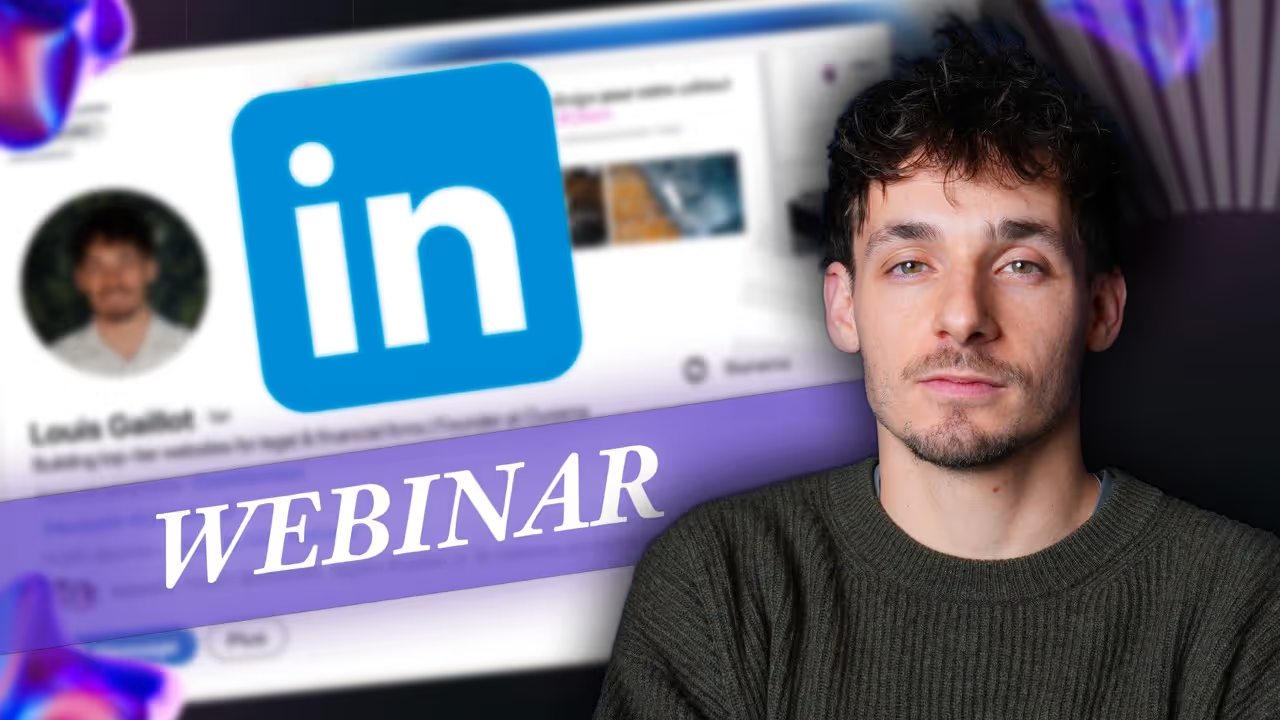
LinkedIn for legal and accounting professionals
Learn how to develop a qualified audience on LinkedIn with a clear strategy, impactful content, and effective tools.

Learn how to develop a qualified audience on LinkedIn with a clear strategy, impactful content, and effective tools.
Today, LinkedIn is no longer just an online resume. It is a real lever for visibility, business and credibility. But you still have to know how to use it... correctly.
In a recent webinar, we analyzed concrete steps to develop an audience on LinkedIn, without falling into bullshit or spending 8 hours a day there. Here is a detailed summary to take action.
Before you even think about the content, start with Work on your LinkedIn profile. It's your window. And a window that is untidy, unclear or that doesn't explain anything... doesn't attract anyone.
Here are the elements to be treated as a priority:
Having an audience on LinkedIn does not mean accumulating thousands of random contacts. It's to build a relevant network, with people who can become:
For example, a specialized lawyer (in employment law, in IP/IT, in real estate...) has no interest in adding all of LinkedIn. On the contrary:
👉 All you need to do is target professionals in its sector or its type of customers : HR managers, SME managers, real estate agents, etc.
➡️ Result: a network skilled, where each post or interaction has more impact.
⚠️ Namely: LinkedIn limits connection requests to around 200 per day. So it's useless — and counterproductive — to add everyone.
Better to take the time to Filter your additions to keep only the profiles that stick to its positioning.
Engage on the platform : comment on targeted posts (not just passively liking). Today, the impressions of the comments are visible. So your well-written comments can bring you a lot of visibility.
Tip: no empty comments like “So true 👏”. Bring a nuance, ask a question, share a useful perspective.
If you want to automate all or part of your actions on LinkedIn, there are very effective (and legal) tools. But before that, you can also explore LinkedIn Ads advertising for a more direct and targeted approach.
Here are some automation tools like:
💡 Attention: these tools must be handled with strategy. Automation is no substitute for relevance or personalization. The aim is not to spam, but to Save time on repetitive tasks while maintaining a human message.
You don't have to post every day, but you have to write content regularly to exist in the feed of your prospects. This content strategy fits perfectly into a larger approach to natural referencing (SEO) to maximize your online visibility.
Formats that work:
But what matters above all is the melts.
Yes, the algorithm is important. Yes, the layout plays a role. But no trick replaces a real background. And it starts with post ideas that stick to reality.
Once the background is clear, take care of the shape:
Building an audience on LinkedIn isn't just for full-time content creators. With a good base (profile), a targeted network, and honest and useful content, you can build a real presence.
LinkedIn is part of a larger digital ecosystem: think also about optimize your website and to explore other advertising channels to diversify your sources of customer acquisition.
No need to dance, do empty storytelling, or publish every day. Just consistency, strategy, and a bit of audacity.